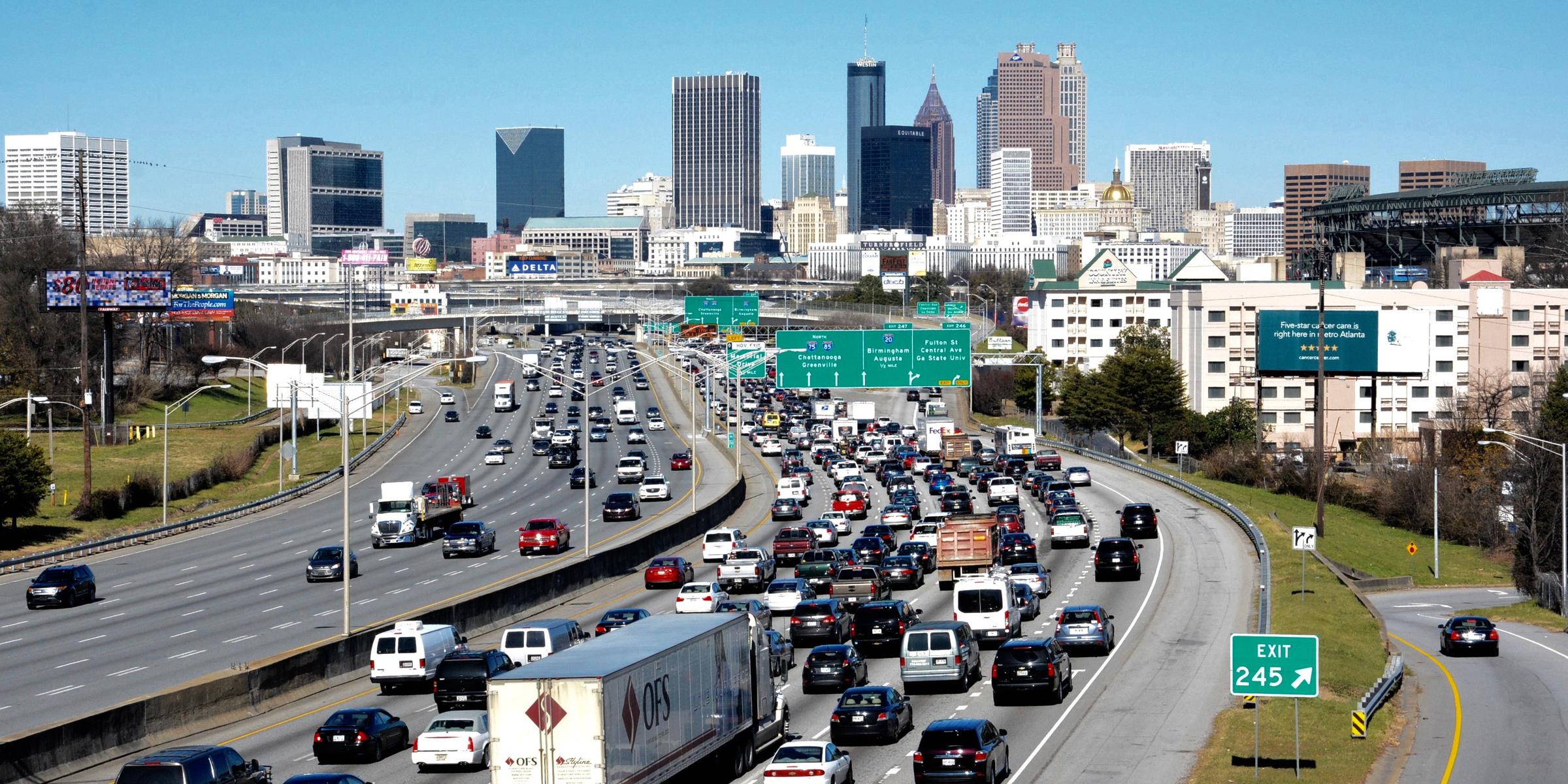

Heavy traffic is the norm around the intersection, mainly caused by vehicles weaving between lanes. “It’s just gotten to a point where operationally it’s severely outdated and needed this upgrade.” “This particular stretch of road, and that interchange in particular, has long been an issue but obviously with massive population growth in Atlanta over the last 20 to 30 years it has become exponentially worse, truthfully,” says Rob Bird, program manager at The Walsh Group. Image courtesy of OpenStreetMap Contributors. General contractor Archer Western, part of The Walsh Group, is now midway through the USD $76M expansion, which involves widening and reconstructing parts of the busy section.Ībove: The point where the two interstates meet has been a problem area for years. Sitting next to Hartsfield-Jackson, the world’s busiest airport, the roadway is a key connection linking with the huge perimeter highway that surrounds the city centre. One of the biggest projects is an improvement to a northbound stretch of Interstate 75 - notorious for collisions - as it joins Interstate 285 south of downtown. In the meantime, upgrades to some of Atlanta’s heaviest traffic hotspots are alleviating some of the strain.

Investing over USD $170BN through 2050, the plan includes expanding the Streetcar network and building new rail lines while investing in cycling and walking routes.Ībove: Atlanta's new Regional Transportation Plan aims to give commuters more travel options than driving.īut many of these long-term projects are still awaiting funding or public support, so their effects won’t be felt for years. Years of neglect have left some bridges on the verge of collapse while some outdated water systems are putting public health at risk.Ģ2% of the country’s roads are in poor condition and urban traffic congestion costs US cities billions of dollars each year.Ītlanta is one of the hardest hit centres and, with the city’s population set to rise by three million people over the next 30 years, a new Regional Transportation Plan has been developed. Right around the US, infrastructure is creaking.Īgeing airports, dams, rail lines and energy networks are in urgent need of upgrading or replacing altogether. In the absence of a federal plan, Georgia’s capital is now embarking on a multi-billion dollar push to fix its challenges.īut with a city to keep moving, a deep-rooted culture of driving, huge sites spread over several miles and the world’s busiest airport on its doorstep - the task is not exactly straightforward.Ībove: Atlanta is one of the most congested cities in the US. The nightmare is typical of cities across the US, a country that’s seen infrastructure investment as a share of GDP steadily fall, despite its population growing.
#TRAFFIC ATLANTA DRIVERS#
IN 2019, drivers around Atlanta spent more than 80 hours stuck in traffic generating pollution and frustration, while costing each of them over USD $1,200 on average. This article and video contain paid promotion for Bluebeam. Video powered by Bluebeam and narrated by Fred Mills.


 0 kommentar(er)
0 kommentar(er)
